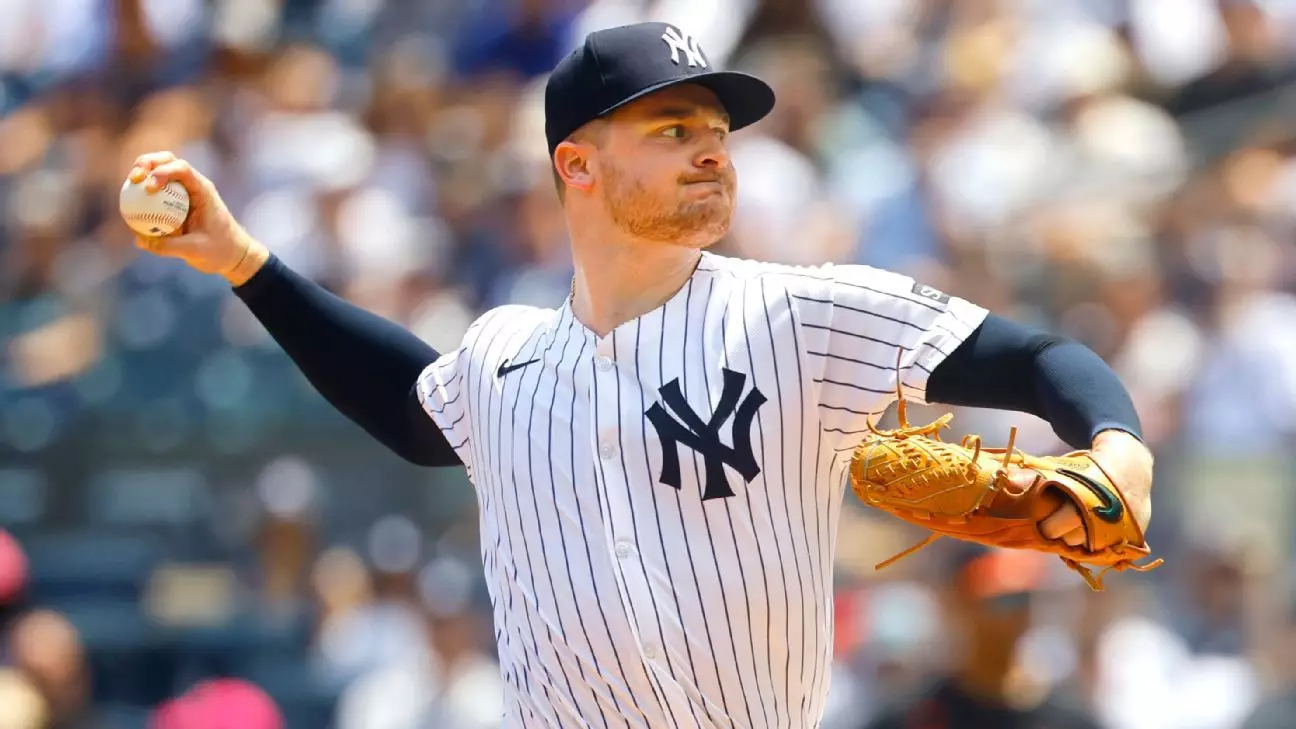The New York Yankees, a franchise celebrated for its storied history and relentless pursuit of excellence, now find themselves teetering on the edge of a crisis that threatens both their immediate season and future stability. The recent announcement that Clarke Schmidt is likely to undergo Tommy John surgery is not merely a setback; it is a stark reflection of the fragility that underpins modern baseball’s demanding demands. This injury, layered atop a series of misfortunes that have severely depleted the Yankees’ starting rotation, underscores how systemic issues—overexertion, insufficient depth, and perhaps a culture that pushes pitchers beyond sustainable limits—are warping the very fabric of the team’s aspirations.
The episode exposes a sobering truth: in the relentless chase for success, teams sometimes overlook the long-term health of their players. Schmidt’s injury, just as he was peaking, illustrates a dangerous pattern where physical resilience is sacrificed at the altar of immediate competitiveness. The Yankees, historically a powerhouse, now confront the nightmare of losing yet another promising arm—a pattern that highlights a deeper flaw: the inability to innovate around roster resilience. It is not merely a matter of bad luck but a call for systemic reassessment regarding player management and injury prevention.
Injury as a Reflection of the Modern Game’s Brutality
Tommy John surgery, once a rarity, has become almost a rite of passage in contemporary pitching. Yet, its recurrence within a league roster speaks volumes about the brutal physical toll of the sport. Schmidt’s second such operation, after experiencing the same ligament tear in 2017, illuminates how repetitive stress—combined with the intensity of major league competition—erodes even the most promising talents. The Yankees’ injury list now reads like a cautionary tale: Gerrit Cole, Luis Gil, Ryan Yarbrough—each of their setbacks representing a microcosm of the high stakes and high pressure that define this era.
Moreover, the injury pattern raises significant ethical questions about the culture of pitching in the major leagues. Do teams prioritize short-term success over long-term player health? Is there an inherent flaw in the development and usage strategies that elevate risk factors to hazardous levels? The Yankees, like many others, gambled heavily on the durability of their pitching staff, but that gamble has backfired spectacularly. The accumulation of injuries suggest that the game itself has become less about skill and more about surviving a physically punishing grind.
The Impact on Yankees’ Strategic Planning and Future Prospects
The repercussions extend far beyond the immediate. Without Schmidt, and with Cole’s recent Tommy John surgery, the Yankees’ starting rotation faces an existential threat. The team now must scramble to fill gaps with internal options like Carlos Carrasco, Allan Winans, and prospects like Cam Schlittler. Yet, these solutions feel fragile compared to the stability a healthy Schmidt or Cole could have offered. The reliance on unproven commodities and seasoned veterans seeking to provide stability amid chaos highlights a lack of foresight and depth within the roster.
The looming July 31 trade deadline becomes not just a strategic move but a desperate necessity. The Yankees must now shop aggressively, risking financial overload and potentially compromising long-term team chemistry, all to patch a rotation that was once perceived as formidable. This situation underscores a core issue in modern baseball: the sport’s undervaluing of sustainable development and injury prevention. Instead, teams often chase short-term wins, creating a cycle of crisis management that severely hampers their ability to build enduring success.
Perhaps most troubling is the broader reflection this scenario casts on baseball’s culture. The relentless quest for victory sometimes encourages a reckless attitude toward player health, emphasizing immediate results over sustainable practices. The Yankees’ current predicament should serve as a wake-up call that the game’s physical toll demands a more humane, strategic approach—one that factors in durability and long-term player welfare.
In light of these challenges, the Yankees’ future hinges on their willingness to confront this harsh reality. Their current roster depth is inadequate, and their injury management strategies need a serious overhaul. Without decisive and meaningful change, they risk unraveling the very fabric of what makes their franchise legendary—nothing less than a reckoning with the brutal costs of the modern game.



Leave a Reply